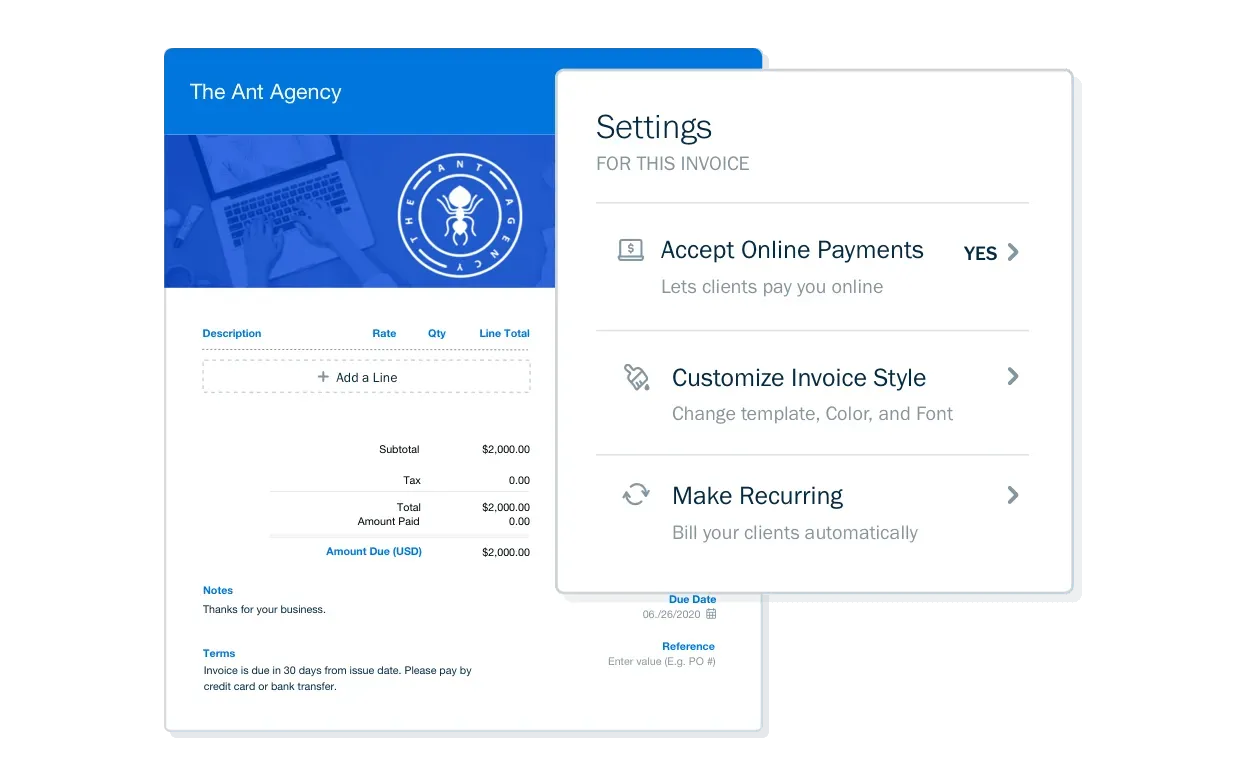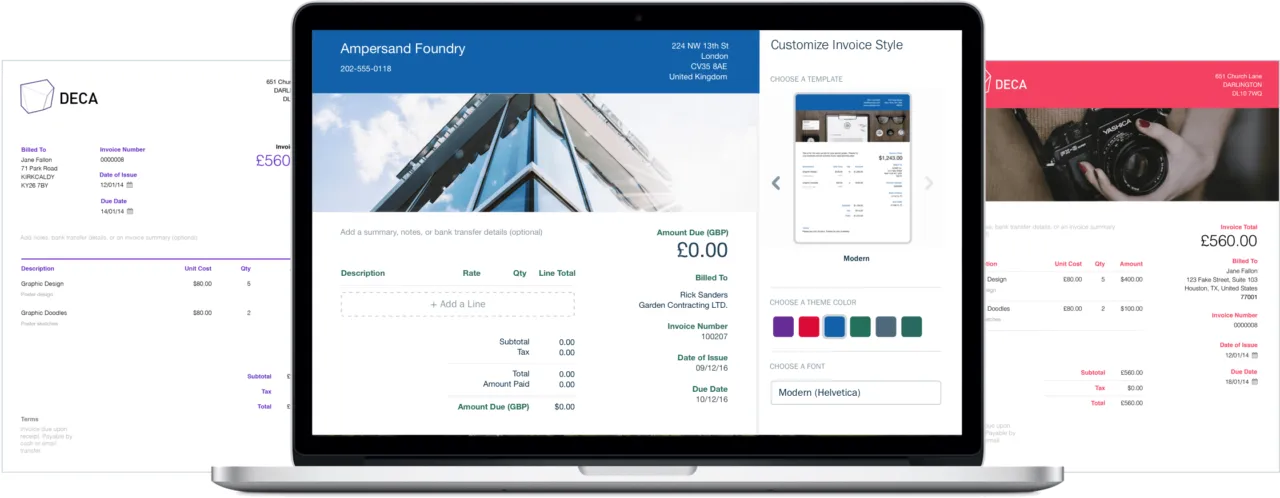What Is a Remittance Address? A Definitive Guide

You have to consider several things when you’re setting foot in the business world. Whether you’re a small business owner running your own company or just filling out a direct deposit slip at your new job, you need a valid address to receive payments. This is where a remittance address comes into play. But what exactly is a remittance address?
We’ll take a closer look at the definition in our definitive guide.
Key Takeaways
- A remittance address is a destination for sending payments and invoices.
- Remittance addresses are a helpful way for businesses to receive payments and invoices to a specified location or department.
- A remittance address looks the same as any standard physical address but is separate from a corporate address.
- A remittance address can help you to scale your business while staying organized and on top of payments and invoices.
- If your business receives a lot of invoices and payments, it’s a good idea to consider creating a separate remit address to streamline the processes.
Here’s What We’ll Cover:
What Does a Remittance Address Look Like?
Should I Consider Getting a Remittance Address?
What Is a Remittance Address?
A remittance or remit address, as it’s otherwise known, is a destination for sending checks and invoices. It functions similarly to a regular mail address but is explicitly used for payment transfers.
A remittance address is a handy way for people or businesses to receive international payments. There is no limit on what address you can use. Some people use their home address, while others prefer a P.O. Box or another address.
You can also use a remittance bank account address, which means that the remittance address is the address of an actual bank. Some businesses will route their payments to a specific remittance address or bank account address instead of an office to be processed.

Remit addresses are used by businesses worldwide to send payments, especially when they are processing and sending an international money transfer.
When you encounter a remittance address, you may see terminology such as:
- Remit To: This is informing a customer where to send a payment.
- Remit Address: This is associated with companies asking where to send payments.
- Billing Address: This is the address affiliated with a payment’s destination.
What Does a Remittance Address Look Like?
A remittance address will look just like a standard or regular mailing address. It should be clearly labeled with the prefix “Remit to:” followed by the address where the payment should be sent.
Sometimes the address will be an international one. But even if this is the case, it should still look like any general mail or other normal mailing address in the recipient country.
One thing not to get confused by is mixing up the remittance address with the corporate mailing address of the financial institution or business. You should not send payments to the corporate address unless directed to do so.
Always search for the “remit to:” address that should be listed on your invoice.
To give an example, let’s take a look at Amazon’s structure:
Remittance Address Example
Corporate Address
Amazon Corporate Headquarters,
410, Terry Ave N,
Seattle,
98109,
W.A.
Remittance Address
Synchrony/Amazon
P.O. Box 960013,
Orlando,
F.L.,
32896-0013
You can clearly see that these are two separate addresses. So any invoices or payments should be sent to their remittance address in Florida. This is instead of their corporate address in Washington state.
If you’re working with clients that use remittance addresses, FreshBooks can help you create professional, high-quality financial documents to elevate your communication. Browse our invoice templates and see how they can help your invoicing process become simpler and more efficient. Then, click here to start your free trial.

Why Use a Remittance Address Instead of a Billing Address?
If you own a business, creating a remittance address is helpful if you’re growing rapidly.
It’s an excellent tool for businesses to stay organized and process their payments more efficiently. But perhaps most importantly, it helps ensure that essential invoices aren’t lost among the general daily mail your business receives.
Having payments and invoices go to a remittance address also helps with the following:
- Processing payments faster
- Making payments faster when your business receives an invoice from a client
- Making sure that no payments or invoices get lost when being delivered between different departments

Importance of Remittance Addresses
A remittance address is an important aspect of a growing business to help track, manage, and streamline invoicing. Below are the four primary ways a remittance address can benefit your small business.
Facilitation of payment processing
A remit address aids the facilitation of payment processing by separating your invoicing address payments and payment receivables to an address managed by the appropriate team members. This ensures you won’t lose track of invoices, payments, or payment-related materials in the piles of additional business mail you receive.
Avoidance of payment delays
When you have all of your payment communications delivered to the same remittance address, it’s easier to make sure you never miss a crucial payment deadline. Staying on top of payments and due dates keeps your business in good standing and allow you to spend less time managing and tracking bills.
Prevention of payment errors
A remittance address simplifies getting your invoices, payments, and financial transactions to the correct department. Whether you send your payments directly to your bank and work with a banker to manage deposits, withdrawals, and transfers or have a dedicated team that manages payment tracking, a remittance address is an ideal way to avoid payment errors that can become a big hassle.
Importance for tax purposes
Having all your financial transactions, payment, and payment processing information in one place and managed at one location alleviates some of the stress of tax season. You can rest assured that the correct documents have made it to the right department and that everything has been collected and processed more accurately. This makes gathering necessary information and documentation for tax purposes much more efficient.
Use invoicing software to help manage your remittance address information and receivables. FreshBooks invoicing software can help ensure that remittance address information is accurate and up-to-date, leading to improved payment processing times, reduced errors, and a more streamlined accounting process. Click here to start your free trial.

Should I Consider Getting a Remit Address?
If you are a business owner whose company has a general mailing address but receives a lot of invoices and payments, consider creating a separate remit address. This can help you keep everything organized and avoid missing necessary payments.
If you receive payments and invoices through a remittance address, you must follow these steps:
- Change your existing billing forms, websites, business cards, and everything else to reflect the address change.
- Maintain that receiving address and check it often.
- In the period of time when you have just changed your address, still, regularly check your old address as clients may accidentally mail a payment there.
Conclusion
A remittance address is a valuable financial organization tool for businesses of any size. Utilizing a dedicated address for payment processing and invoicing streamlines your business operations, allowing you to focus on scaling and building best practices. It only takes a short time to create a new remit address, and the process can help save a lot of time and stress in the future. Set up a new remittance address before your big financial boom, and you’ll avoid many headaches and have more time to enjoy your crescendoing success.
FAQs on Remittance Address
Is a remittance address the same as a bank address?
It can be! While a remittance address is not automatically a bank address, several banking institutions allow you to set your remit address at their location. The bank will receive payment and then processes your receivables and invoices on-site.
What is a remittance email address?
A remittance email address works similarly to a physical remit address. Rather than psychical documentation being sent to a specific address, digital documentation can be sent to a remittance email address. This works for all digital payment processing or payment processing and invoicing information.
What are two types of remittance?
Inward remittance and outward remittance. Inward remittances mean receiving funds acquired locally or from offshore locations or accounts. Outward remittances refer to funds transferred to recipients within the country or internationally.
What is the difference between remittance and payment?
The scope of the word remit payment is a significant difference. Although a remittance can be a payment sent in response to receiving a bill, it’s more commonly used as a term to describe funds that are sent internationally. Essentially, remittances refer to a transfer of funds.
Do we need to pay tax on remittances?
Regarding international accounts, transferring money from one of your foreign accounts to a U.S. account does not incur tax. However, Americans are taxed on their worldwide income. While transferring money between your accounts doesn’t generate taxable income on your federal tax returns, earning income abroad does.
What details do you need for remittance?
When wiring money, provide the recipient’s bank name, account number, and routing number. Individuals may use gateway apps like PayPal or WorldRemit to send money internationally.
About the author
Jami Gong is a Chartered Professional Account and Financial System Consultant. She holds a Masters Degree in Professional Accounting from the University of New South Wales. Her areas of expertise include accounting system and enterprise resource planning implementations, as well as accounting business process improvement and workflow design. Jami has collaborated with clients large and small in the technology, financial, and post-secondary fields.
RELATED ARTICLES


 What is CIS Tax and How Does it Work?
What is CIS Tax and How Does it Work? How to Set Up a Partnership in Business: A Step-By-Step Guide
How to Set Up a Partnership in Business: A Step-By-Step Guide Triple Bottom Line Reporting: What It Is & How Does It Work?
Triple Bottom Line Reporting: What It Is & How Does It Work? Equivalent Annual Cost: Definition & Benefits
Equivalent Annual Cost: Definition & Benefits What Is Comparative Advantage Theory? Benefits & Examples
What Is Comparative Advantage Theory? Benefits & Examples Subsidiaries Definition & How Does a Subsidiary Company Work
Subsidiaries Definition & How Does a Subsidiary Company Work